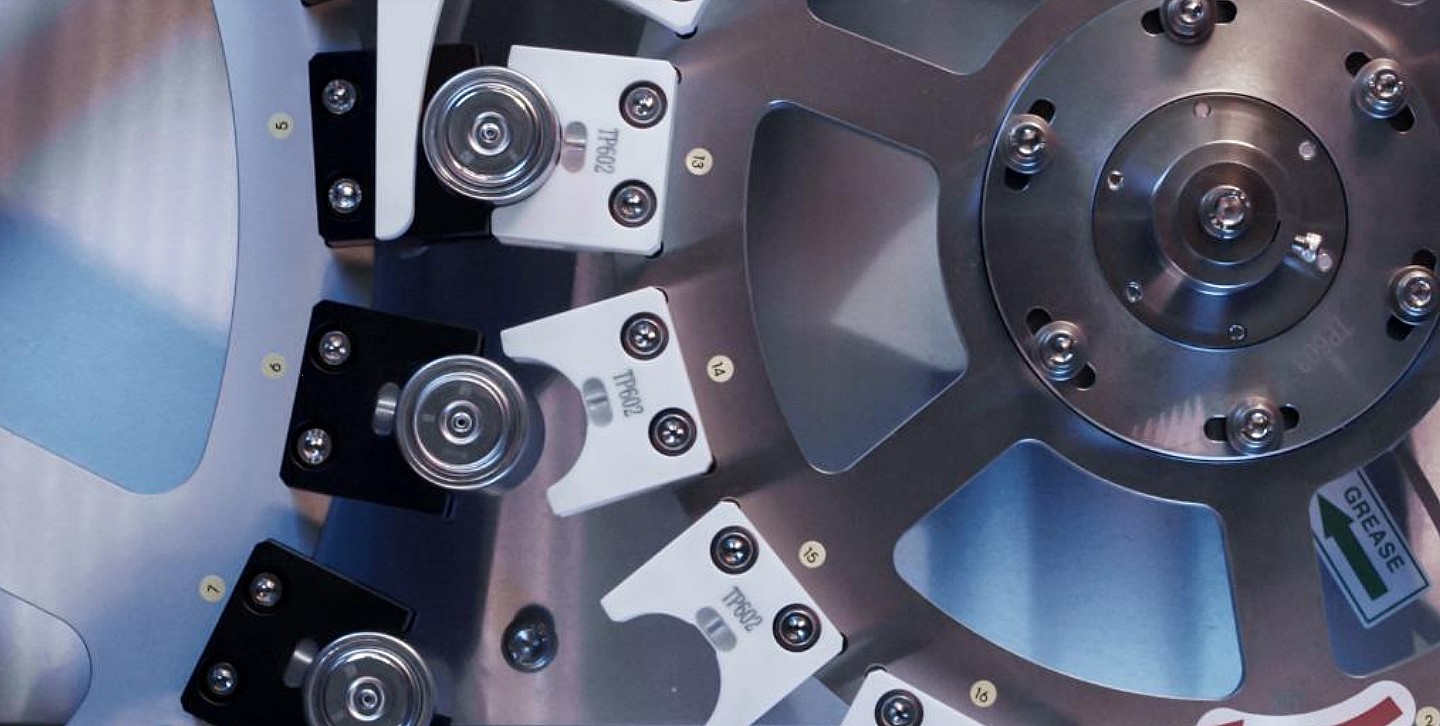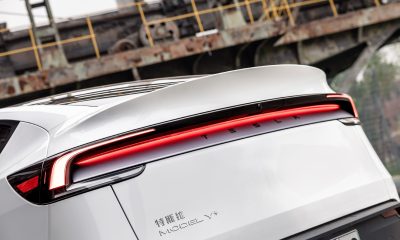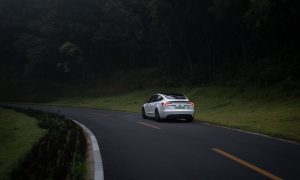

News
Tesla and the EV sector’s growth is driving up lithium, cobalt, and nickel prices
The electric vehicle revolution is fully underway. Led by successful vehicles like the Tesla Model 3, which are compelling alternatives to comparable internal combustion cars, EV sales are taking off. The momentum of EVs as a whole may hit some challenges soon, however, partly due to the rising prices of raw materials that are critical to the production of batteries.
The prices of lithium-ion batteries have seen a 90% decline to just about $130 per kWh. That’s very close to the widely targeted $100 per kWh level, which is estimated to be the point where EVs could become fully competitive with ICE cars in terms of cost. Expectations were high that the battery industry would hit $100 per kWh in 2024, but recent trends in the market suggest that this may not necessarily be the case.
Increasing EV Demand
Benchmark Mineral Intelligence, a company that tracks the worldwide battery supply chain, noted that lower costs helped boost EV sales by 112% in 2021 to over 6.3 million units globally from the previous year. And sales are only poised to increase. EV leader Tesla, which sold nearly a million pure electric cars on its own in 2021, is looking to grow its deliveries by 50% this year — and estimates among TSLA bulls suggest that the company’s growth might be even more impressive.
Benchmark Mineral Intelligence notes that battery-grade cobalt prices are up 119% from January 1, 2020 through mid-January 2022. Nickel sulfate prices saw a 55% rise in price, and lithium carbonate saw a whopping 569% increase. Benchmark Mineral Intelligence chief data officer Caspar Rawles, in a statement to The Wall Street Journal, noted that some battery cell makers that typically offered long-term fixed-price contracts have ended up shifting to a variable price model instead. This allowed them to pass on some of the costs of rising material prices to consumers.
What is quite unfortunate is that battery materials may remain in short supply for some time. China, which dominates the battery supply chain, is also aggressively increasing its electric vehicle production. And considering that it generally takes about seven to ten years to deploy a new mine, a lot of key battery components may end up being supply-constrained in the coming years.
Addressing A Supply Shortage
The rising prices of battery raw materials do not mean that the EV revolution would likely be slowed down, however. The battery recycling industry is now gaining some momentum, with companies like Redwood Materials — which is led by Tesla co-founder and former CTO JB Straubel — already preparing to sell recycled battery components to Panasonic for the production of battery cells at Tesla’s Gigafactory Nevada later this year. This helps foster a closed-loop system since Redwood also receives Panasonic’s battery scrap from Tesla’s Nevada facility.
Other initiatives that may help the auto sector weather the rising costs of battery materials involve a focus on batteries that use less expensive, more abundant components. Tesla China is among the companies that are at the forefront of this movement, with Giga Shanghai utilizing lithium iron phosphate (LFP) batteries for the Model 3 and Model Y. LFP batteries utilize iron in their cathodes instead of nickel and cobalt, making them less controversial and far more affordable.
And while LFP batteries typically result in vehicles with shorter range than cars equipped with nickel-based cells, tests from veteran electric vehicle owners in countries such as Norway are starting to reveal that iron-based cells are nothing to scoff at. Longtime EV advocate Bjorn Nyland, for example, recently conducted one of his 1,000-km tests in a base Model 3 equipped with an LFP battery that was produced in Gigafactory Shanghai. The vehicle performed amazingly despite the cold conditions and its relatively small 60 kWh battery pack.
Don’t hesitate to contact us with news tips. Just send a message to simon@teslarati.com to give us a heads up.
Elon Musk
Elon Musk confirms Grok 4 launch on July 9 with livestream event
The rollout will be accompanied by a livestream at 8 p.m. Pacific Time.

Elon Musk has officially confirmed that Grok 4, the latest version of xAI’s large language model, will launch on July 9. The rollout will be accompanied by a livestream at 8 p.m. Pacific Time, hosted on xAI’s official account on X.
xAI goes straight to Grok 4
Back in May, leaks indicated that xAI was getting ready to ship Grok 3.5. Considering Musk’s recent comments, however, it appears that the artificial intelligence startup would be focusing on the large language model’s fourth iteration instead. As noted in a Financial Express report, users on X have sighted references to Grok 4 in the lead up to the update’s launch, such as “grok-4-prod-mimic” and “Grok 4 Code.”
Musk’s Grok 4 announcement comes as AI competition intensifies between major players including OpenAI, Google, and xAI. With Musk’s Colossus supercomputer fully operational in Memphis, xAI appears to be accelerating its AI product roadmap.
Musk pushes Grok toward political neutrality
Grok 4’s launch also follows a recent controversy involving political bias, as noted in a CNN report. Last week, Grok responded to a user on X stating that political violence in the U.S. since 2016 had come more from the political right than the left. The chatbot noted in a later reply that its answer was based on information from sources like Reuters, the Journal of Democracy, and University of Maryland studies.
Musk stated that Grok’s response was a “major fail.” “Major fail, as this is objectively false. Grok is parroting legacy media. Working on it,” he wrote in a post on X. By the end of June, Musk noted that he was “grinding all night with the xAI team” and that they were making “good progress.” He also stated that the model “Will be called Grok 4. Release just after July 4th. Needs one more big run for a specialized coding model.”
News
Tesla opens massive solar Supercharger station in California
The Supercharger opened to customers ahead of Fourth of July weekend, while Tesla continues phase two of construction on the site.

Tesla has officially launched the first several Supercharging posts at a massive station in California, notably including solar canopies and grid-scale batteries to offer completely renewable charging.
Last week, Tesla announced on X that it opened the first 84 Supercharger stalls of a planned 168-stall station in Lost Hills, California. Additionally, the massive Supercharger project features 11MW of solar canopies and 10 Megapack batteries for off-grid charging powered entirely by solar energy.
Tesla completed the first phase of the project just days ahead of the busy Fourth of July holiday weekend, adding that initial construction took just eight months. In addition to the remaining charging stalls, Tesla says it’s building a set of lounge areas, renderings of which can be seen below alongside current photos of the site.
Notably, the site also includes V4 charging posts for the company’s latest available charging speeds, and it’s located near the busy junction between I-5 and Highway 46 in Kern County.
“Thank you [Kern County] and [PG&E] for collaboration and approvals,” Tesla wrote in a follow-up post.

Credit: Tesla Charging | X

Credit: Tesla Charging | X

Credit: Tesla Charging | X

Credit: Tesla Charging | X
Tesla Supercharger Maps for North America, Europe, and Asia pic.twitter.com/0U5r0XRPyo
— TESLARATI (@Teslarati) July 2, 2025
READ MORE ON TESLA SUPERCHARGERS: Tesla launches ultra-fast V4 Superchargers in China for the first time
Testing at the LA Diner, plus Musk update on potential Tesla solar Gigafactory
The huge Tesla Supercharger station completed phase one of construction fairly quickly, especially given how long Tesla has been working on its unique Los Angeles diner, drive-in, and Supercharger location. Still, the company was seen performing some testing at the nearly-completed charging station earlier this month, and will reportedly be holding a job fair.
Elon Musk also responded on Monday morning to a post on X, suggesting that Tesla is “thinking about” building a U.S.-based solar Gigafactory in order to help support increased power needs with AI growth, and to bolster domestic solar production.
Tesla is building a new UFO-inspired Supercharger in the heart of Alien country
News
Tesla driver walks away from major accident with minor injuries
The driver sustained only minor injuries, and the exact cause of the crash remains under investigation.

The driver of a Tesla Model Y survived and walked away from a harrowing accident on Monday in California, only sustaining minor injuries despite the vehicle being impaled by a guardrail.
On Monday morning around 4:34 a.m., the Los Banos division of the California Highway Patrol (CHP) responded to the accident on I-5 near Panoche Road, involving a 23-year-old in a Tesla Model Y. According to a post on social media, the driver veered off the road for unknown reasons in the northbound lane, before crashing directly into the guardrail and impaling the vehicle.
You can read the full message and photos from Los Banos CHP below, as were shared in a Facebook post on Monday afternoon.
This morning a Tesla model y was traveling in the #1 northbound lane of I-5 north of Panoche Rd. For unknown reasons driver allowed V-1 to veer off the roadway, travel through a dirt center divide, and crashed into the fixed metal guardrail. Lucky for the driver he only sustained minor injuries and was able to walk away. Driving a vehicle requires 100% attention to the road. Avoid distractions and focus on driving.

Credit: CHP Los Banos (via Facebook)

Credit: CHP Los Banos (via Facebook)

Credit: CHP Los Banos (via Facebook)
In a statement to SFGate, CHP officer Myles Anderson said that the driver only sustained minor injuries, while no arrests are made and drugs and alcohol are not suspected to have been involved. The report also notes that Tesla’s “cruise control and lane assistance features” were activated, according to Anderson. However, it’s not entirely clear if this is referring to Supervised Full Self-Driving (FSD), or to the cruise control and lane assist features baked into Autopilot.
At the time of writing, CHP has not yet responded to Teslarati’s request for clarification and additional details on the matter.
Tesla Crash Safety Ratings across its lineup: pic.twitter.com/ny30R7ceji
— TESLARATI (@Teslarati) July 1, 2025
READ MORE ON TESLA SAFETY: Tesla rolls out crucial new safety feature aimed at saving children
The news comes after Tesla has touted its vehicles as incredibly safe for many years. In December, for example, the company highlighted receiving top safety scores from regulators on four different continents throughout the world, including from the National Highway Traffic Safety Administration (NHTSA) and the Insurance Institute of Highway Safety (IIHS) in the U.S.
Tesla has also listed the goal of making its vehicles the safest on the road throughout the years, both in the overall design of its vehicles and in its Autopilot and Full Self-Driving (FSD) programs.
Tesla Model 3 ranks as the safest new car in Europe for 2025, per Euro NCAP tests
-

 Elon Musk1 week ago
Elon Musk1 week agoTesla investors will be shocked by Jim Cramer’s latest assessment
-

 News2 weeks ago
News2 weeks agoTesla Robotaxi’s biggest challenge seems to be this one thing
-

 News2 weeks ago
News2 weeks agoWatch the first true Tesla Robotaxi intervention by safety monitor
-

 Elon Musk2 weeks ago
Elon Musk2 weeks agoA Tesla just delivered itself to a customer autonomously, Elon Musk confirms
-

 News2 weeks ago
News2 weeks agoTesla Robotaxi rollout proves that Elon Musk still delivers, even if it’s late
-

 Elon Musk2 weeks ago
Elon Musk2 weeks agoxAI welcomes Memphis pollution results, environmental groups push back
-

 Elon Musk2 weeks ago
Elon Musk2 weeks agoElon Musk commends Tesla team on successful Robotaxi launch
-

 Elon Musk2 weeks ago
Elon Musk2 weeks agoElon Musk confirms Tesla Optimus V3 already uses Grok voice AI


















